Fred Franklin turned his love of climbing and a talent for trades into a 25-year career as a steeplejack, having started his business in response to the Summer Olympics in 1996.
When Fred Franklin left home to make his way in the world, he tried to find a profession that combined his love of scaling tall trees, freeclimbing hard-to-grasp mountain faces and rappelling down rocky cliffs with being a jack-of-all-trades-type craftsman—equally at home with scraping and painting as he was with metal fabrication or tilework. He found what he was looking for in his work as a steeplejack over the past 25 years. Franklin is one of the rare steeplejacks who climbs using ropes and harnesses to secure himself. He does not use scaffolds or cranes on his jobs.
“I think I have an adrenaline shortage,” Franklin says. “I need a lot of it to feel normal. When I’m up on the steeple, I love what I’m doing.”
Some history: A steeplejack is a craftsman who climbs high buildings, towers and steeples to provide maintenance, repair or restoration. As one might expect, steeplejacking was an itinerant profession— the man went where the work was. With the advent of machinery and technology, it became a dying vocation. Thankfully, outliers like Franklin exist. He started his business in 1996 in response to the Summer Olympics in Atlanta.
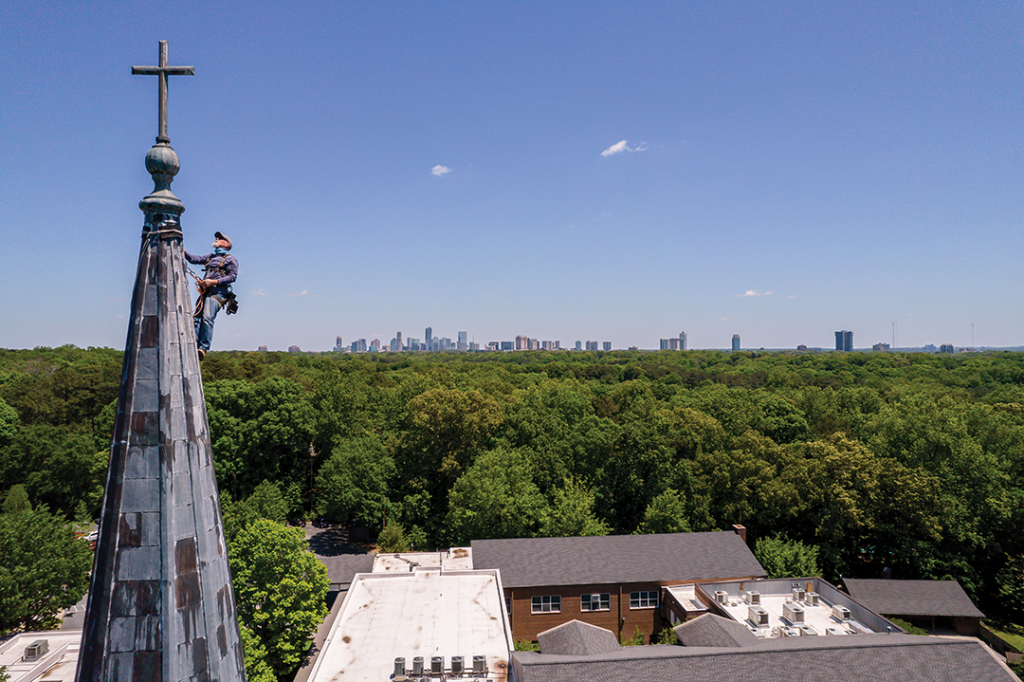
“Second Ponce de Leon Baptist Church in Atlanta found out that their steeple was going to be on international TV because the Episcopal church across the street had a camera shot [of the marathon route],” he said. “It looked terrible.”
Franklin at the time was working for a company called High Climbers, which contracted with the CNN Center. He used to wash windows, clean various items, like the original TBS satellite that hung in the CNN atrium, and hang safety nets for others doing repair work. When he got the Second Ponce gig, he left High Climbers.
“I think I have an adrenaline shortage. I need a lot of it to feel normal. When I’m up on the steeple, I love what I’m doing.”
Fred Franklin
“Second Ponce wanted me to prep, paint and repair the metal on the steeple,” Franklin said. “I needed to reinforce the rotted-out support for the cross. Not much had been done before I went up there to take care of these items.”
Franklin had just two months to get the steeple in shape, but he finished the project with time to spare. The customer—and steeplejack—were definitely satisfied.
“I repainted it recently about three years ago and hardly had to do any prep work,” he said. “It took a quarter of the time because the job was done properly the first time. I was pretty proud of that.”
After Franklin completed the initial Second Ponce job, he realized he had found a niche. Because he only used ropes to climb, he did not have to rent scaffolding or cranes. As a result, his project bids were substantially lower than those from other contractors. It also meant he did not have to rush projects.
“I don’t have to return equipment, so I’m in no hurry,” he said. “I can take my time with the paint job or the caulk job and let it cure.”
He started Franklin Restoration, got his own insurance and since then has worked on some of the most recognizable roofs and steeples in downtown Atlanta, Covington and cities throughout Georgia and the Southeast. His biggest job, in scope and possibly in name recognition, was Big Bethel A.M.E. Church in downtown Atlanta. Located on Auburn Avenue, Big Bethel is most famous for its neon cross and “Jesus Saves” sign, which is visible from the downtown connector that slices through the heart of the city.
“I re-did all the cornices and the steeple,” he said. “Unfortunately, they replaced them with fiberglass, which I wasn’t too happy about. I re-did the slate on the main roof and all the turrets.”
Today, one of the 110-year-old Big Bethel steeples sits in front of Franklin’s house, shaded by tall trees. Franklin took down the iconic “Jesus Saves” sign, using it as a pattern to make a new one out of aluminum. Then he had to make a cowling for the neon cross on top, which was far from “square” because it was built so long ago.
“I had to take the whole cross down,” he said. “We put the new slate on, [and] the cowling came down over the slate. I had to make the new thing fit on a totally non-square platform. I made the base for it, fabricated it on the steeple so it would be the exact right size, then took it down and mounted the new steeple to that. I already had the hole drilled so that when we put the new one up, it sat right on it and we put the bolts on it. There is no manual.”
Locally, Franklin worked on Covington First United Methodist Church on Conyers Street, prepping and repainting the exquisite pre-Civil War Greek revival church—no easy task, with its full facade portico and six intricate Corinthian columns. He also re-did the slate roof on the Madison-Morgan Cultural Center in Madison. The Center is located in a restored 1895 Romanesque Revival former school building.
Climbing came naturally to Franklin. “I loved climbing trees as a kid and started rappelling with the Boy Scouts when I was 12,” he said. “Later on, I discovered recreational tree climbing. An arborist in Atlanta started a group, and I was just really good at it.” Climbing a steeple requires a slightly different skillset— a lot of knot-tying, strength and some self-control. “I climb up [the steeple] from the inside, going as high as I can, then I drill a hole and push a rope out,” Franklin said. “I feed [the rope] down, then tie it off inside. I climb up that rope from the outside and basically lasso the steeple. I throw a rope around it, then tie a slipknot. Then I get a pole, and I can push it up the steeple and slip the knot and choke it down and climb up and use the other end of the rope to go up until I get to the top. You really have to focus. Fear and panic will get you hurt.”
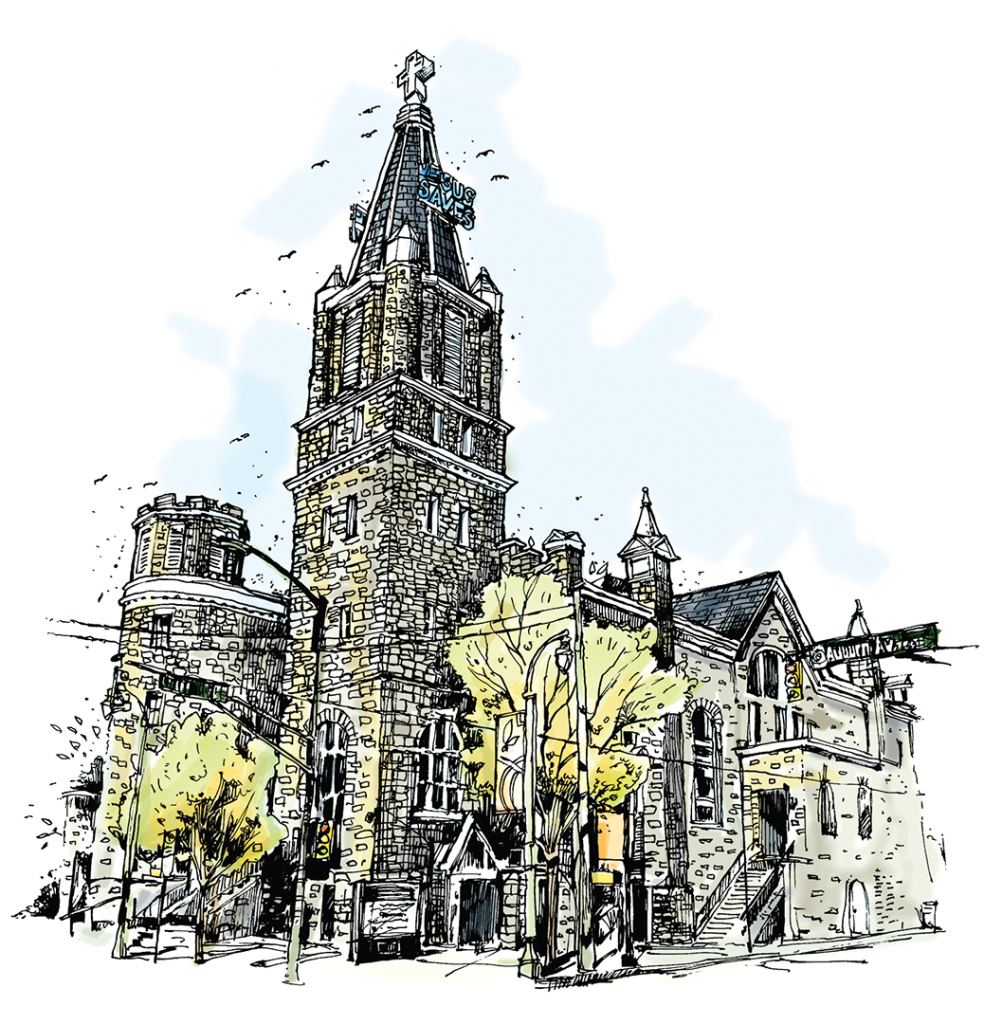
He sets up his work space by wrapping ropes around the steeple a couple more times, laying down carpet pads and sometimes rigging ladders as a type of gin pole—a supported pole used to lift heavy loads. Franklin admits the work requires concentration.
“When I climb, I’m in a different kind of zone,” he said. “The best way to describe it is ‘meditation.’ You totally focus on what you’re doing. The funny thing is, when I come down on the ground from climbing, I’m super clumsy.”
On the hottest summer days, it might seem like steeplejacking would be the worst job in the world. That has never been the case for Franklin, who seems to find thrills in every aspect of his work.
“You get acclimated to it,” he said. “It’s very rare that there isn’t a little breeze going, and it’s usually cooler up there than it is on the ground. I just pretend I’m sailing.”
Click here to read more stories by Patty Rasmussen.

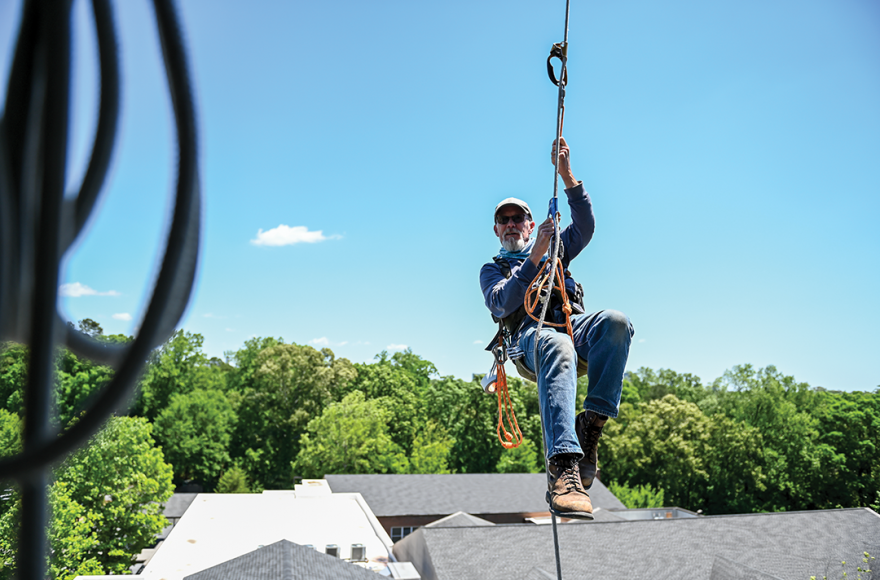
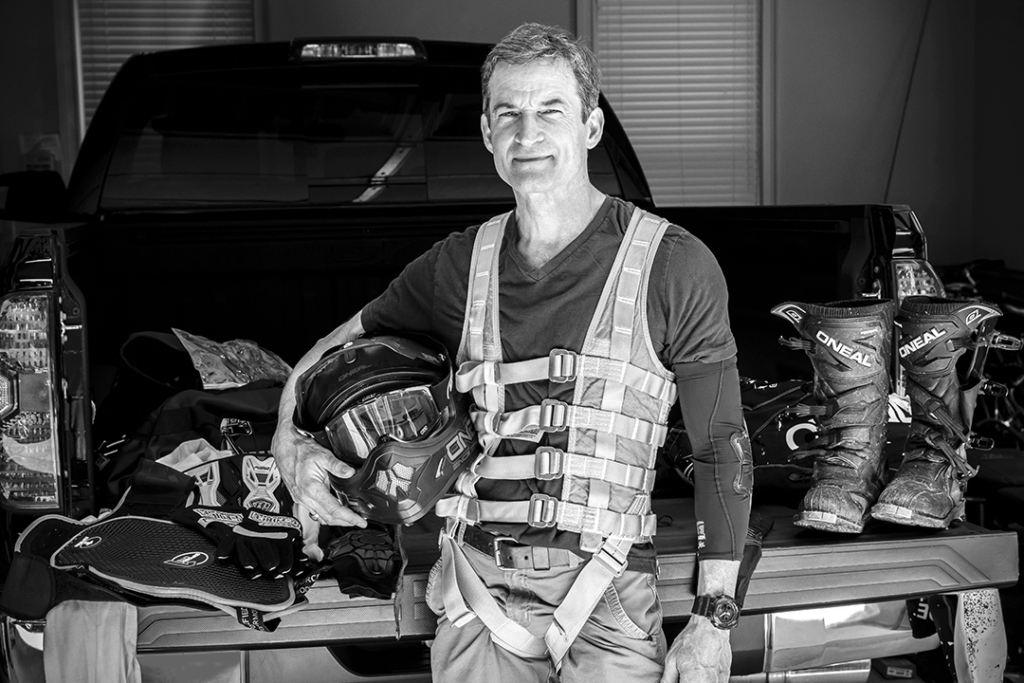
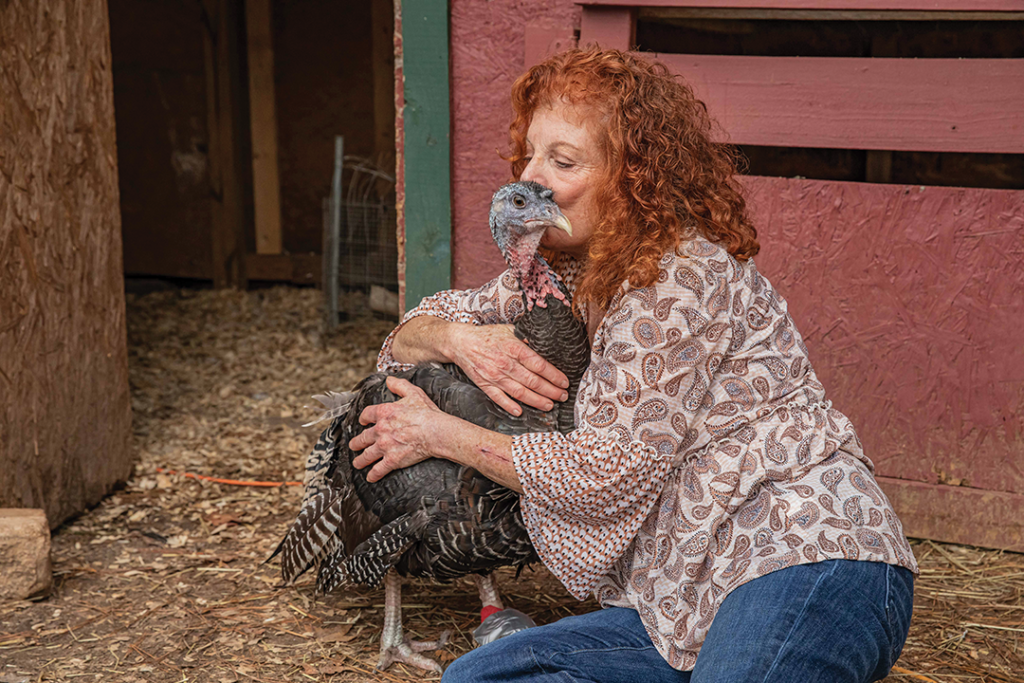
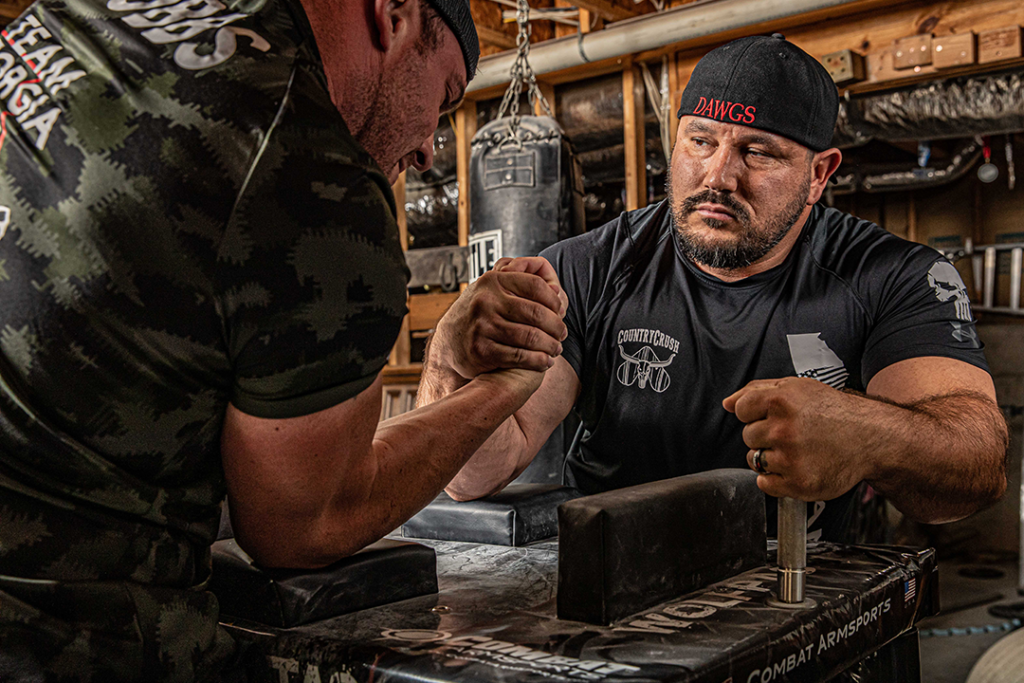
1 comment
Great story. Thanks!